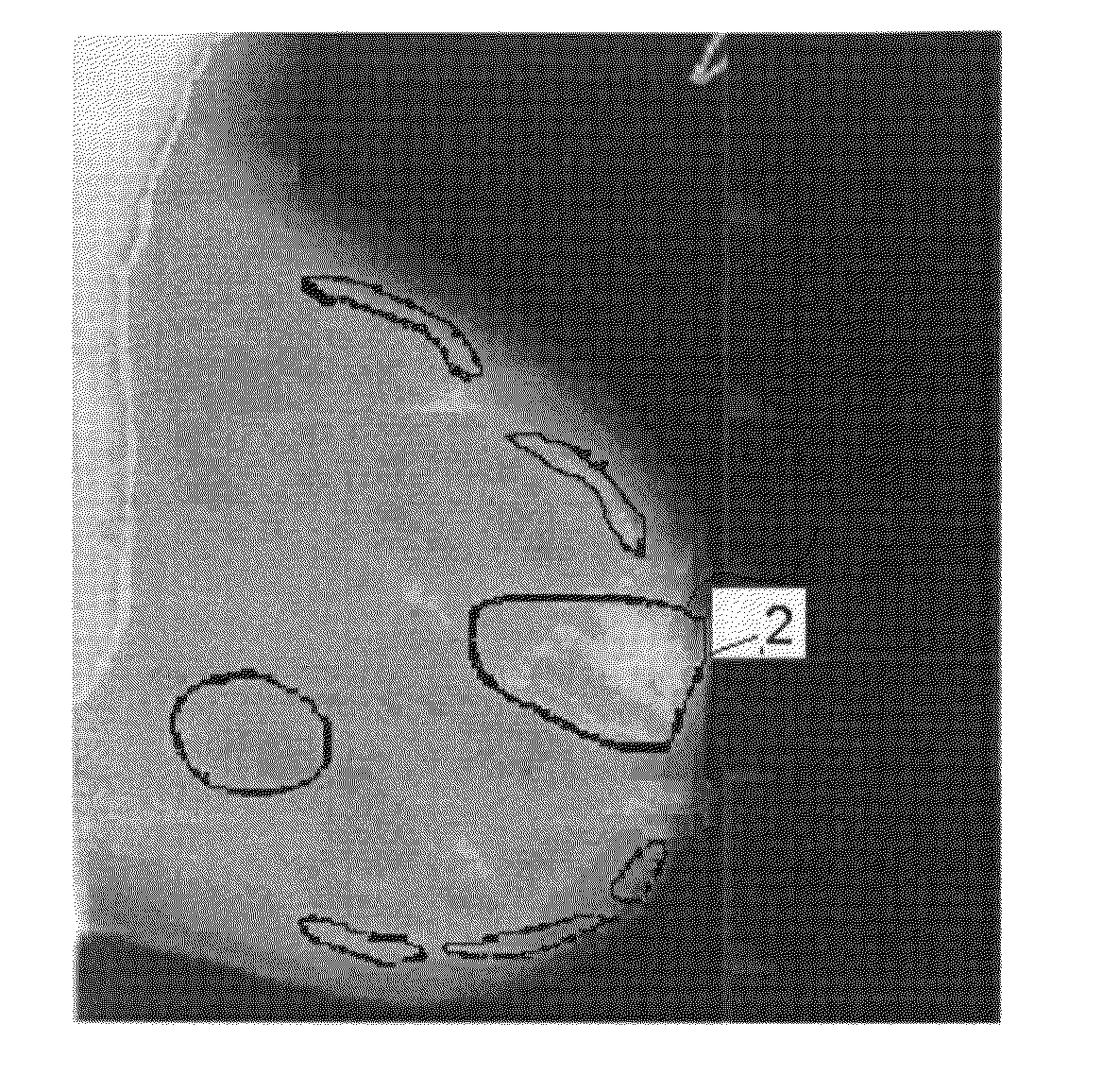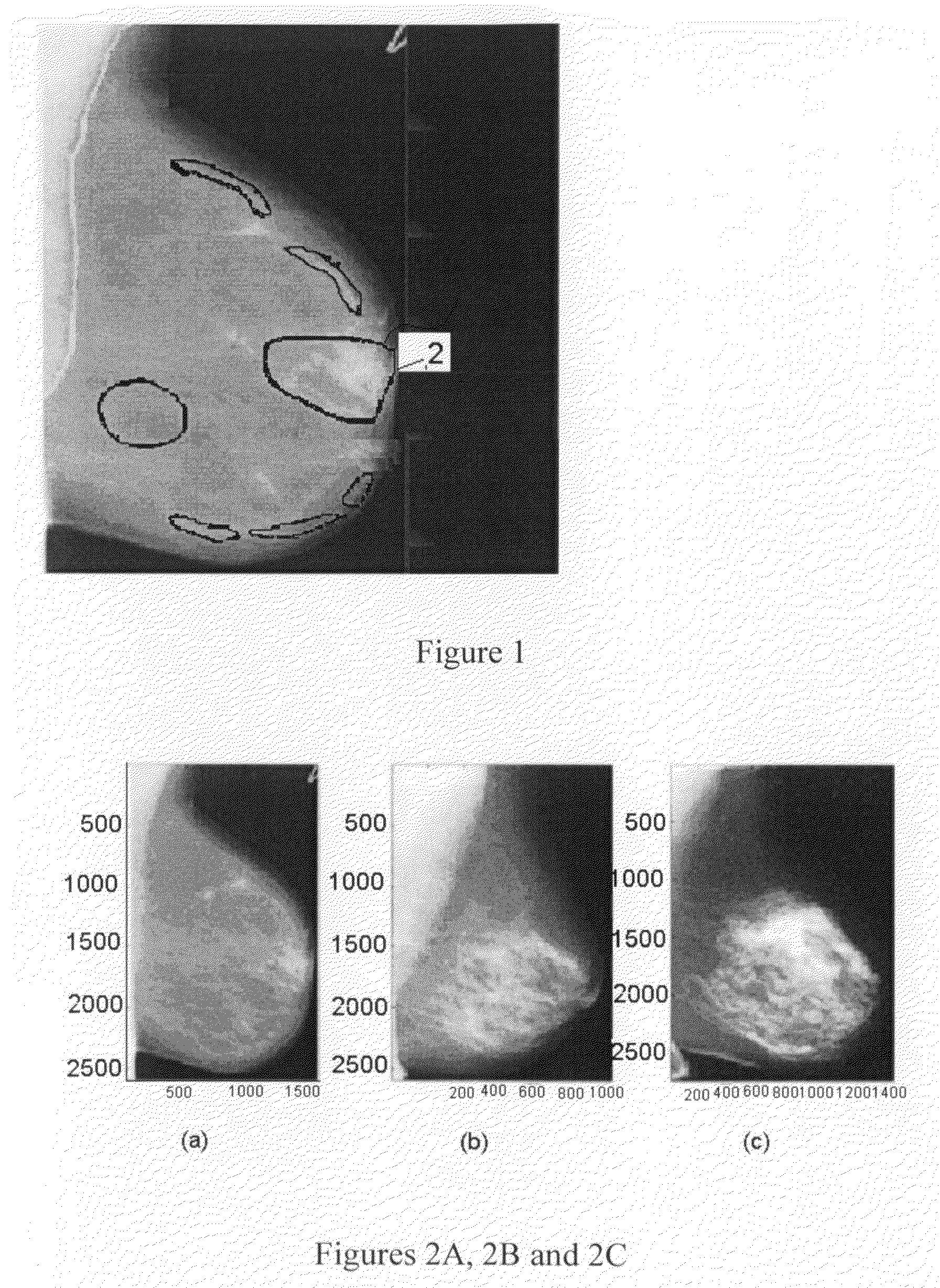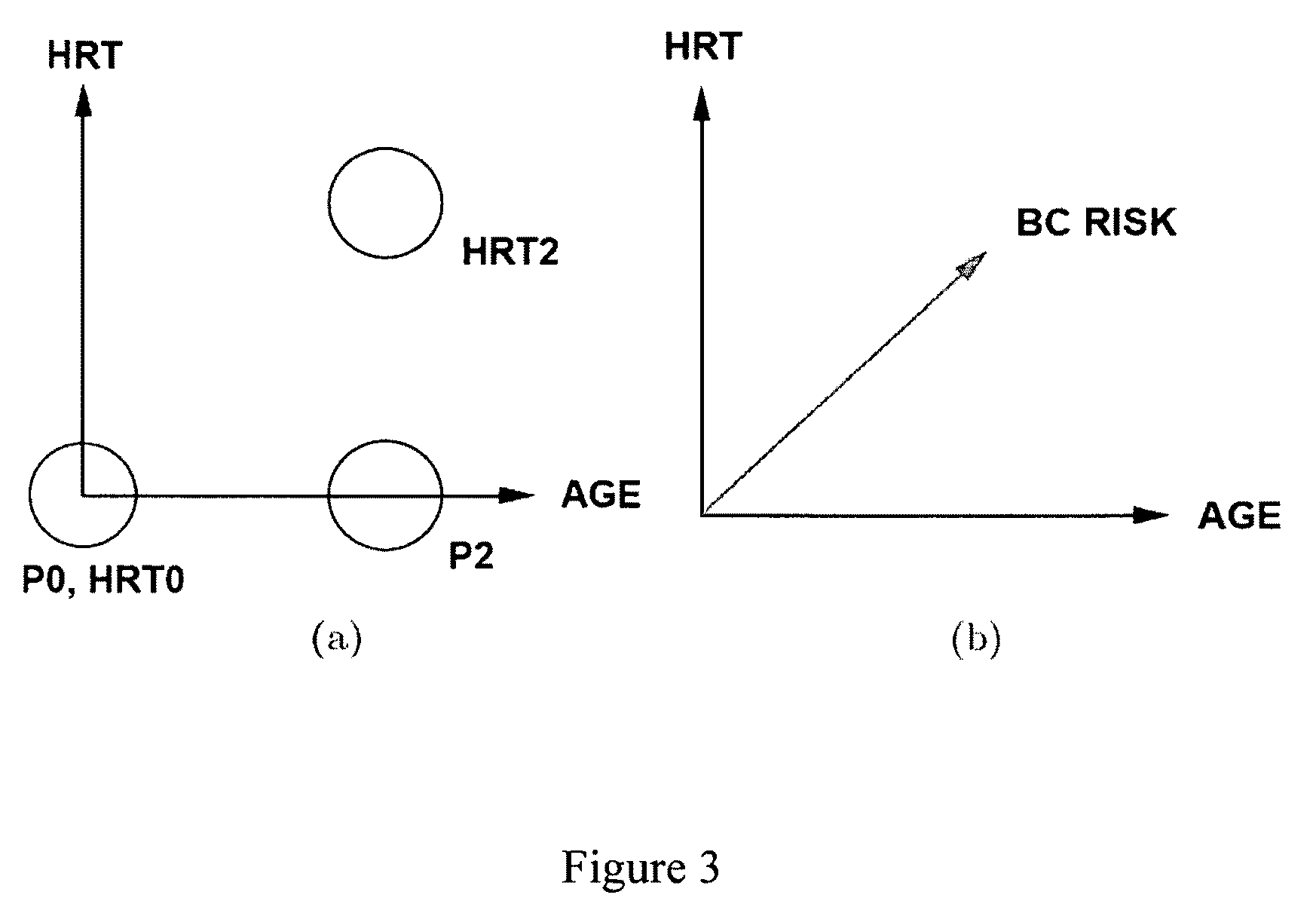Breast tissue density measure
a breast tissue density and measurement technology, applied in the field of breast tissue density measurement, can solve the problems of difficult breast cancer detection, room for error or misjudgment, etc., and achieve the effect of more accurate and sensitive measurement of breast density changes
- Summary
- Abstract
- Description
- Claims
- Application Information
AI Technical Summary
Benefits of technology
Problems solved by technology
Method used
Image
Examples
Embodiment Construction
[0099]We shall describe first an embodiment of the invention based on classifying pixels of an image using a trained classifier which has been trained by unsupervised learning.
[0100]Numerous studies have investigated the relation between mammographic density and breast cancer risk, and women with high breast density appear to have a four to six fold increase in breast cancer risk. Therefore the density is an important feature embedded in a mammogram. In this context and as shown in FIG. 1, the density refers to a specialist's assessment (typically a radiologist) of the projected area 2 of fibro glandular tissue—sometimes called dense tissue.
[0101]As an example, FIGS. 2A to 2C respectively show three example mammograms depicting low, medium and high mammographic densities.
[0102]Typically a mammogram is classified into one of four or five density categories, e.g. Wolfe patterns and BI-RADS. These classifications are subjective and sometimes crude. They may be sufficient in some cases ...
PUM
 Login to View More
Login to View More Abstract
Description
Claims
Application Information
 Login to View More
Login to View More - R&D
- Intellectual Property
- Life Sciences
- Materials
- Tech Scout
- Unparalleled Data Quality
- Higher Quality Content
- 60% Fewer Hallucinations
Browse by: Latest US Patents, China's latest patents, Technical Efficacy Thesaurus, Application Domain, Technology Topic, Popular Technical Reports.
© 2025 PatSnap. All rights reserved.Legal|Privacy policy|Modern Slavery Act Transparency Statement|Sitemap|About US| Contact US: help@patsnap.com



